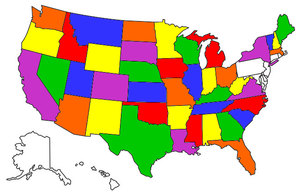Lots of sources of error in the measurement but I won't necessarily dispute your estimate of the amount of oil consumed.Hppants wrote: ↑Sat Sep 05, 2020 12:03 pmWell, you asked....raYzerman wrote: ↑Fri Sep 04, 2020 4:10 pmJust for the record, I'm wondering what exactly was your method of determining what the oil level was and is, i.e., were those methods exactly the same? Did you time it exactly? I'm trying to get at how you determined the burned oil was 350cc since there are several variables involved in a sight glass check.
First, as an old lab tech (wet chemistry), I freely acknowledge the possibility of error in my measurements. That said, with my line of sight "level", my last oil change was filled as it always is, with the bottom of the meniscus in the sight glass even with the midpoint of the "full dot".
4500 miles later, with my "graduated fill cup funnel", with measurements in 10 cc increments, I refilled to the same level. And then I "overfilled" just slightly (meniscus to the top of the dot) to determine a good guess for my error of measurement, which I believe to be about 10 cc.
Therefore, I burned 350cc (+ or - 10 cc) in 4500 miles.
I've got a 750-ish mile ride planned next weekend. Afterwards, I'll drain and change the oil and reset the clock. If it doesn't hurt anything, I'll add the ring free for 5-10 tanks and see what happens.
Regarding any 'tear down", in the extremely unlikely event that my motor blows up, that is where it will stay. I'll part out what I can, and buy another one. I'm capable of tearing the motor down, but likely not able to put it back together. Regardless, I'd rather ride another one....
Assume measurement taken on the centerstand with the bike in the same relative position on a level surface.
Assume the same amount of settling time was allowed - especially with the top-off refill. It can take a little while for that new oil to trickle down all the way.
Everything at the same temperature? Volumetric coefficient of expansion for motor oil is 0.0004 per degree F so for 50 °F and 4 litres of oil, this would be 80 cc. This does not account for volumetric changes in the crankcase as a function of temperature - this could be a larger factor if the measurement isn't done under isothermal conditions.
Have you had the oil analyzed? Consumption could be GREATER than the 350 cc and some of the volume is taken up by fuel in the oil - hopefully not although possible. Some engines appear to "make" oil.
Do the Ring-Free treatment and monitor the situation but I would say you are a LONG way from needing to do anything to the engine. Assuming performance is not affected and there isn't blue smoke out the exhaust, I doubt I would do anything for consumption of less than a litre of oil between changes.
Note: The type of oil (conventional vs synthetic) and the viscosity could be factors as well. Conventional oils and lower viscosity oils may have a higher proportion of volatile components and these may be lost due to evaporation. I suppose they still end out in the exhaust but not because of leaking past rings and seals. You might try a different oil and see how consumption compares.
(45 years as an analytical chemist)
What sort of riding was done for most of this 4500 miles? Hi revs and aggressive engine braking will greatly increase consumption.

